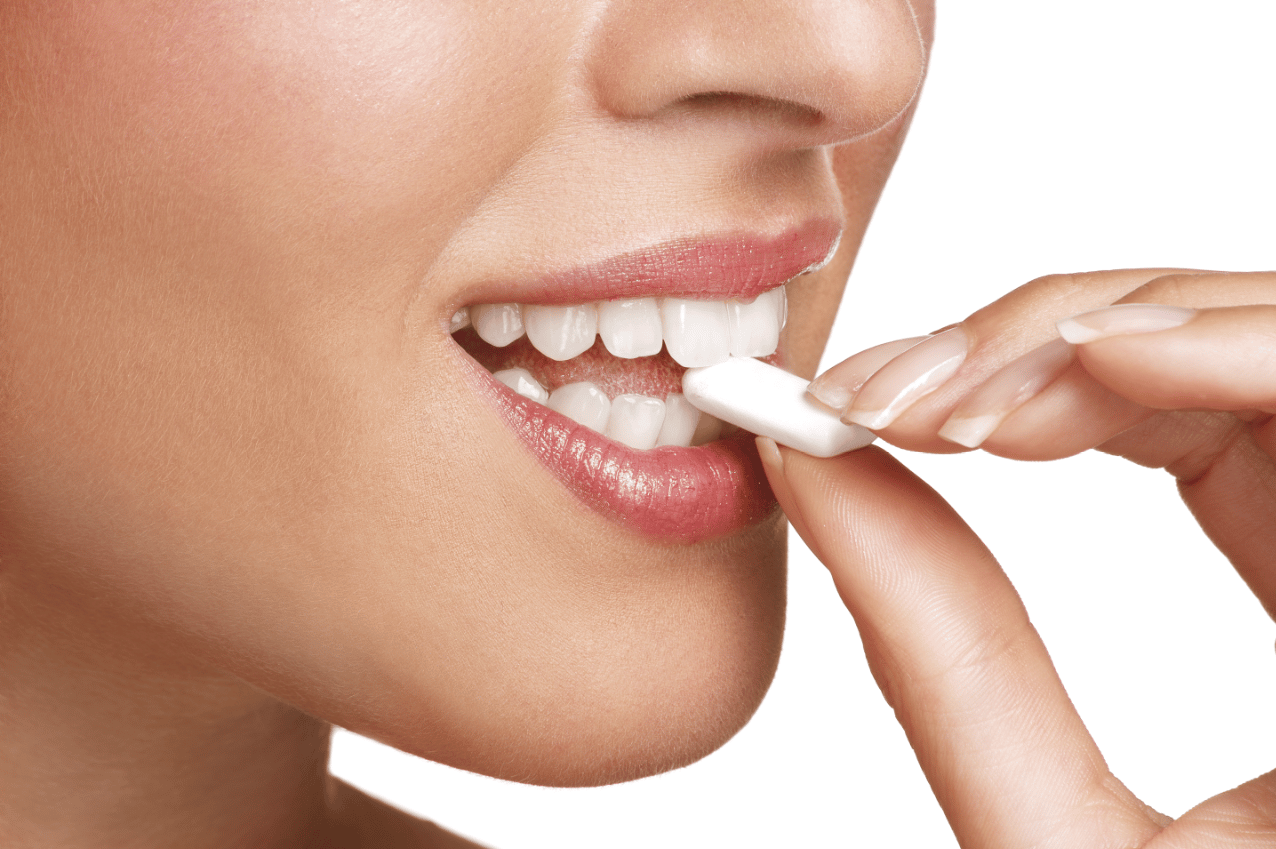The Facts on Chewing Gum


Candy is known for rotting teeth and causing cavities, but gum is in a different category. As long as you choose sugar-free products—especially those with the ADA Seal of Acceptance—gum chewing can be a healthy habit. Here are the facts on chewing gum that will make you want to pop a stick in your mouth right now.
Benefits of Chewing Gum
To benefit from chewing gum, steer clear of any products containing sugar. This only increases your chance of developing a cavity. Instead, choose a sugar-free option, which contains non-cavity-causing sweeteners such as aspartame, sorbitol, mannitol, or xylitol. When you do, you can expect to enjoy these benefits.
Gum chewing helps to clean your teeth.
According to the Oral Health Foundation, chewing sugar-free gum for 20 minutes after a meal helps protect your teeth and gums. This sticky substance removes food particles from the surface of your teeth, lowering your risk for cavities in the process. It also stimulates 10 times the normal rate of saliva flow to help wash away food debris and reduce acids in your mouth that can erode tooth enamel.
Sugar-free gum sweetened with Xylitol reduces bacteria in the mouth.
While any sugar-free gum can help fight cavities, those containing xylitol are especially effective. This naturally occurring sweetener is the ideal replacement for sugar in gum and candy because cavity-causing bacteria can’t feed on it. This decreases the number of harmful bacteria in your mouth, thus reducing your risk for cavities. Xylitol can even reverse existing decay by helping to replace vital minerals in your teeth.
Some chewing gum can harden tooth enamel.
Products containing a substance called casein phosphopeptide-amorphous calcium phosphate (CPP-ACP) are praised for their ability to suppress demineralization and enhance the remineralizing and hardening of tooth enamel. These qualities make your teeth stronger and less susceptible to cavities.
Sugar-free gum helps with bad breath.
Mint is a popular chewing gum flavor. Popping a stick of gum in your mouth after eating garlic or onions can help mask the unpleasant odor. The increased saliva flow can also combat symptoms of dry mouth.
The ADA Seal ensures your gum is evaluated for safety and efficacy.
Some brands of sugar-free chewing gum contain the ADA Seal of Acceptance. This tells you that the product is effective at delivering any claims present on the packaging, such as reducing acid in the mouth, promoting remineralization, reducing cavities, and decreasing gingivitis. The ADA Seal also ensures the gum is deemed safe for your teeth and oral tissues. Manufacturers must submit laboratory and clinical studies to the American Dental Association to be eligible for the Seal.
Limitations of Chewing Gum
Adding gum chewing to your daily routine can be beneficial to your oral health. However, it’s not an option for everyone in every situation. Here are the limitations of chewing gum to be aware of.
Gum chewing is not recommended if you have a TMJ disorder.
For most people, gum chewing is a healthy and recommended habit for oral health. However, if you have jaw pain or symptoms of temporomandibular joint (TMJ) disorder, your dentist may advise you to steer clear of chewing gum, as well as other sticky, tough, or chewy foods.
Gum is not recommended for people with certain oral appliances.
Gum may stick to removable dentures and cause them to come loose. It is also not suitable to chew gum if you have a retainer or braces.
Young children shouldn’t chew gum.
The Oral Health Foundation doesn’t recommend chewing gum for children under seven years old because it can be a choking hazard. Parents should decide when and under what circumstances they deem it appropriate for their children to chew gum.
Whitening gum is limited in its abilities.
Some sugar-free gum products claim to “whiten” your teeth. You can expect them to help lessen the stains caused by smoking and drinking tea or coffee, but they cannot lighten the natural color of your teeth the way in-office whitening can.
Gum shouldn’t replace brushing and flossing.
While gum chewing is an excellent substitute for brushing and flossing while you’re out and about, it’s not a suitable long-term replacement for either one. Keep up with good oral hygiene along with daily gum chewing, which includes brushing at least twice a day and flossing once a day.
Visit the Dentist to Maximize Your Oral Health
Clearly, gum has plenty of health benefits, but just because you chew a piece after lunch each day doesn’t mean you can skip making trips to the dentist. If you struggle with cavities and toothaches, or it’s simply time for your next routine exam and teeth cleaning, please contact Dr. Ania at 303-443-0998. The professionals at our Boulder, CO dentist office will take good care of your smile!


